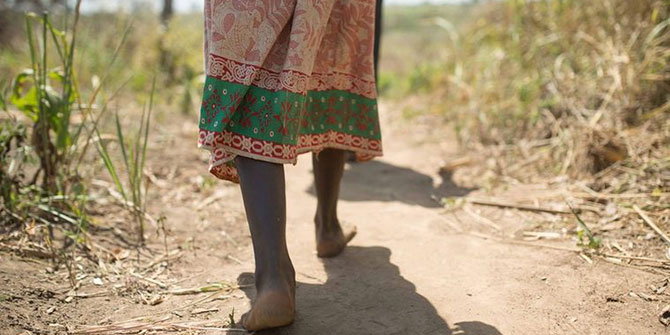Olivier Bucyana examines the peace process that marked the end of the 90s civil war in Burundi and how errors in that process are behind the current political crisis in that country.
The year is 2000 – a glorious year in Burundi’s history. The warring parties of a decade-long conflict, whose casualties no one can assert with precision, gather in Arusha to sign the Arusha Peace and Reconciliation Agreement. After four long years of negotiations led by President Julius Nyerere of Tanzania and President Nelson Mandela of South Africa, the parties signed the agreement in the presence of Heads of States of the Great Lakes Region, representatives of the Organization of African Unity (OAU) – precursor to the African Union – the United Nations, the European Union and the International Organization of la Francophonie. It took a dozen other agreements between 2000 and 2009 for all armed groups to surrender their weapons and agree to begin Burundi’s new chapter – one of reconciliation, forgiveness, healing and social cohesion. By signing the Arusha Peace and Reconciliation Agreement, the warring parties agreed on the root causes of the conflict and on the ways to address them for long lasting peace.

Today, however, Burundi is at a crossroad. President Pierre Nkurunziza’s contested third term led to mass protests and forced over 200,000 to flee to neighbouring countries – many of whom had already been refugees in the past. An attempted coup was foiled in May 2015. Hundreds have been killed in protests and neighbourhood raids. Military barracks and security services’ posts have been attacked by unidentified armed insurgents. Up to recently, Burundi was hailed as an example of a successful transition from war to peace, where did it go wrong?
In a set of five protocols, the Arusha Peace and Reconciliation Agreement provided a blueprint for the current constitution and for a power sharing formula meant to both protect minorities from under-representation in state institutions and push for more coalition building. For justice to prevail and to pave the way for reconciliation, the Agreement provided for the establishment of a truth and reconciliation commission and proposed the setting up of a tribunal to investigate and punish war crimes, crimes against humanity and genocide. It also provided a timeline for the implementation of the said protocols to be supervised and coordinated by the Implementation Monitoring Committee (IMC) whose mandate ended when the first elected post-transition Government took office. The importance of this Committee laid in its ability to make sure all the protocols of the Agreement were implemented. A 29-member committee was inaugurated on November 27th 2000 and was led by Berhanu Dinka, the UN Representative to the Great Lakes, up to the election of President Nkurunziza on August 26th 2005. The IMC ensured a number of provisions stipulated in the agreement were implemented, including, but not limited to, the laws on freedom of activities for political parties, the establishment of the National Committee on Refugees and Sinistres (CNRS) and the formation of the National Independent Electoral Commission. It also successfully monitored the drafting of Burundi’s post-transition constitution adopted in 2005 whose consociative model is hailed for providing a balance in the representation of ethnic groups within state institutions and the defence forces. The same constitution is at the centre of Burundi’s current political crisis as President Nkurunziza ran for a contested third term in 2015.
One overlooked aspect of the Arusha Agreement is the establishment of an International Judicial Commission of Inquiry on genocide and war crimes as well as a National Truth and Reconciliation Commission (TRC). The mandate of these commissions is to shed greater light on the acts of violence committed during Burundi’s cyclical conflicts since the country gained independence in 1962. Both commissions should have been established during the transition period, however, as the IMC’s mandate ended in 2005, none of the commissions had been established. Amid opposition, the TRC was set up nine years later, in 2014. The opposition criticises the TRC for favouring forgiveness over justice and for contradicting some of the recommendations drawn from popular consultations including the decision to nominate commissioners without a committee of selection, which naturally puts into question the independence of the commission. The International Tribunal for Burundi in charge of holding accountable those responsible for acts of genocide, human rights violation, war crimes and other crimes against humanity has yet to be established.
As Burundi faces this crisis, the looming prospects of civil war bring back the haunting memories of the 1990s when hundreds of thousands were killed and displaced. This crisis brings back the issue of justice or rather the lack of justice. Would Burundi be in this position today if justice had been taken more seriously?
Justice not only honours the memory of the victims but also serves as a deterrent for future acts of violence. Most importantly, carrying out justice creates valuable institutional and national memory which can serve as a reminder to future generations that impunity will not be tolerated.
It is important that African Heads of States acknowledge that the implementation of the Arusha Peace Agreement was incomplete when the transition came to an end and still is not complete today. The countries and organisations that acted as guarantors of the agreement were complacent as Burundi slowly slid back into crisis. Lessons must be drawn from the partial implementation of the Arusha Agreement if the upcoming mediation is to be successful in creating lasting peace.
Read The Harrowing Journey to Peace in Burundi – Part 1.
This post was first published on Africa in Perspective.
Olivier Bucyana is a LSE alumnus. Follow him on Twitter @OlivierBu1.
The views expressed in this post are those of the authors and in no way reflect those of the Africa at LSE blog or the London School of Economics and Political Science.





